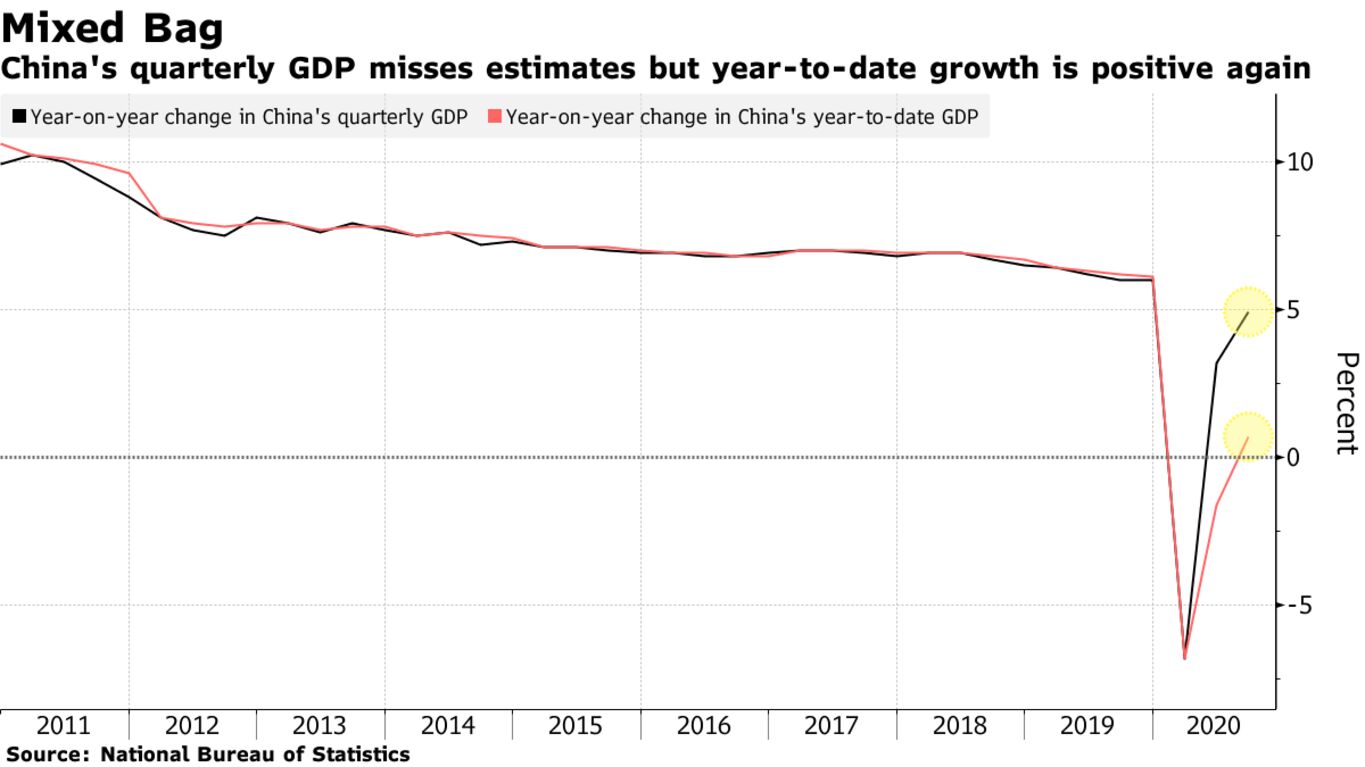China’s recovery from the coronavirus pandemic continued in the third quarter and showed signs of broadening in September as consumer spending accelerated, keeping the economy on track to be the world’s only major growth engine this year. Gross domestic product expanded 4.9% in the third quarter from a year ago, missing economists’ forecast for a 5.5% expansion. Both retail sales and industrial production gained momentum in September, reassuring markets that the recovery is on track.

The numbers show China’s early and aggressive containment of the coronavirus has set the economy up for a faster rebound than any of its peers. That’s a rare positive for a world economy still clawing its way out of its worst slump since the Great Depression — a revival further complicated by the resurgent virus in Europe and the U.S.
“It’s an encouraging and hopeful message for the rest of the world,” said Rob Subbaraman, global head of macro research at Nomura Holdings Inc. in Singapore. “If you successfully handle the health crisis, your economy can recover.”
Markets were mixed on the news. The CSI 300 Index of stocks, which last week was within 1% of a five-year high, slipped 0.3% as of the mid-day break in Shanghai. The yuan was little changed near 6.7 per dollar, after briefly trading at its strongest in 18 months.

Underpinning the recovery has been the containment of the virus that has allowed factories to quickly reopen and capitalise on a global rush for medical equipment and work-from-home technology. That export strength was offset by a recent increase in imports, depressing the contribution of net trade to output growth.
